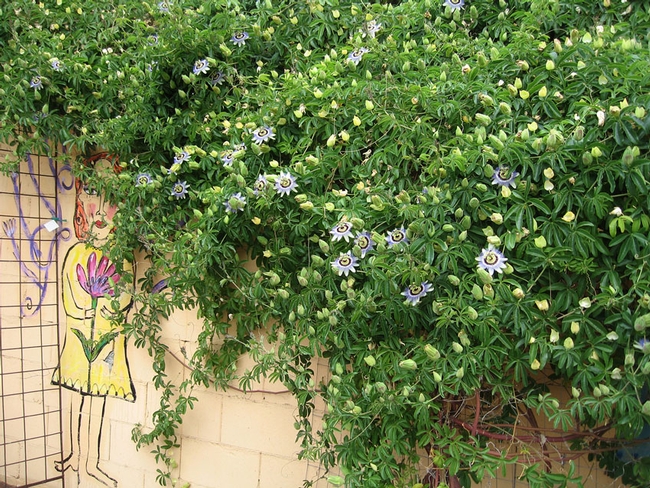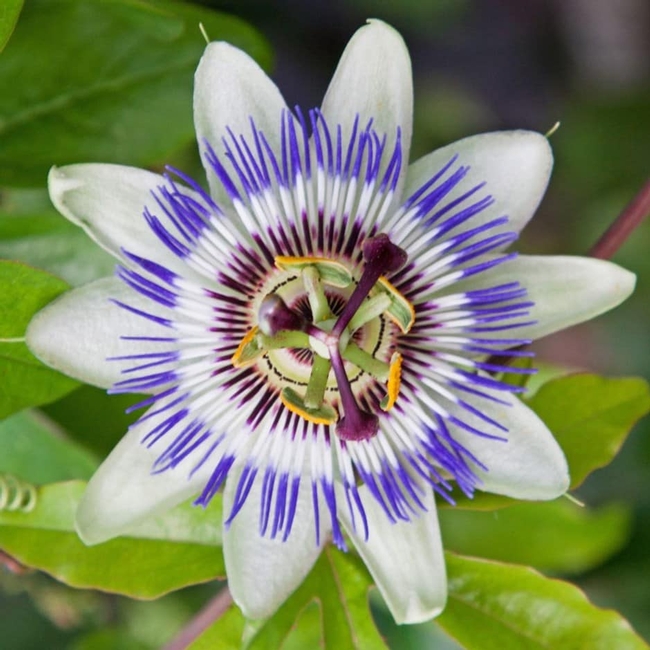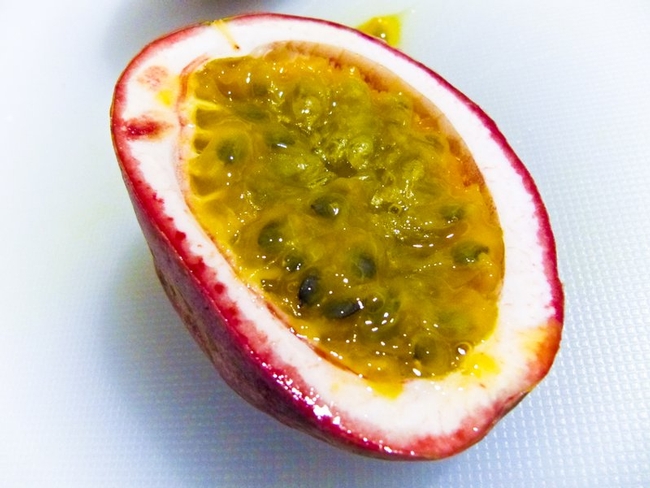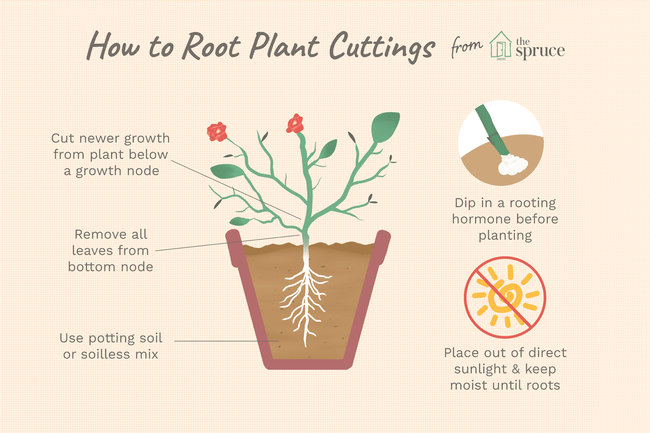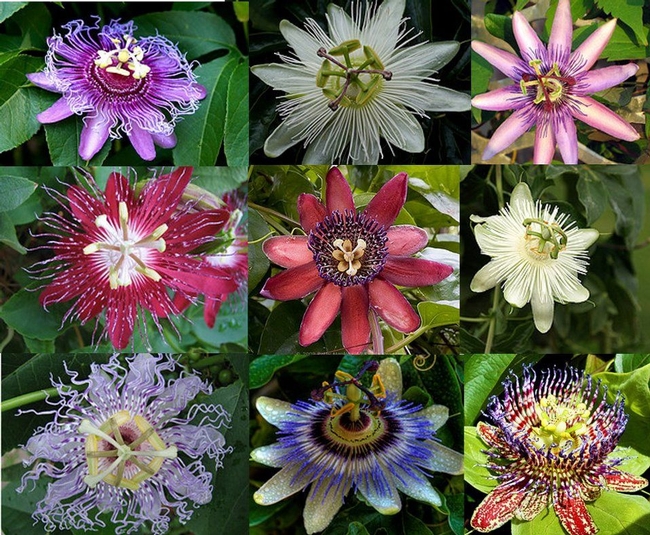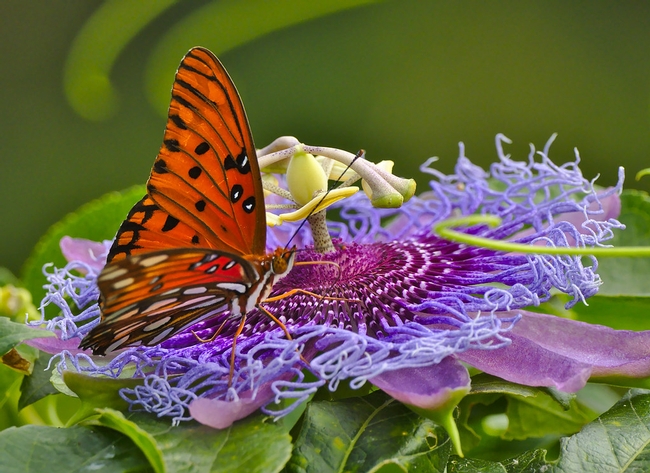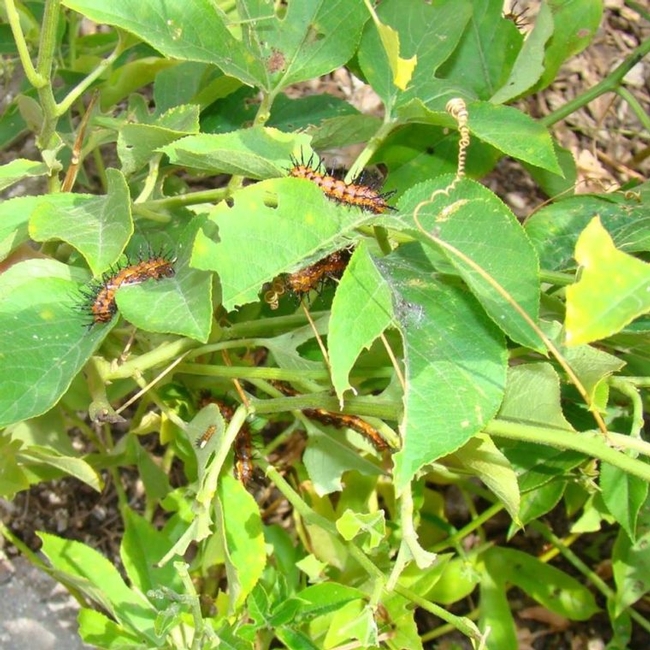By Cindy Watter, UC Master Gardener of Napa County
Over the years, several people have asked me how I grew the beautiful blue and white passionflower that cascades over a trellis (and also invades my flower beds). The answer is: I didn't. My former neighbor Kristine is responsible.
One day Kristine dragged home three straggling, almost dead, unpromising looking flora she claimed were passionflowers. "Ninety-nine cents each at Thrifty!" she exulted. I thought, "Three dollars wasted."
Once again, I was wrong. Kristine planted her prizes in a deep raised bed full of rotted horse manure and compost that someone gave her and started watering them with Miracle-Gro. Next thing I knew, they had tumbled over the trellis and started to compete with my honeysuckle.
Today Kristine lives elsewhere but the vine is still here and still vigorous, even if it doesn't get nearly the same amount of care. I would be surprised if the newer neighbors water it. Still, it reseeds prolifically and continues to attract butterflies.
Passionflower (Passiflora caerulea or common passionflower) owes its name to Catholic missionaries in Brazil, who saw religious significance in its structure. To them, the spikes around the flower center symbolized the crown of thrones. The ten petals represented the faithful apostles, the three stigmata the nails, and the five anthers the wounds.
The fruit contains a sweet, floral-scented jelly used for cookery. The fruit from my plant isn't that lush, probably because I don't live in a rain forest. Its seeds are attractive to birds, though. The seed is contained in a sac with juice and pulp. Many of these sacs make up the inside of the fruit.
Many guests have admired the flowers and taken a fruit home with them, thinking the seeds within will grow. It's not that easy. When birds expel seeds, the seed covering is abraded in the bird's craw, so the seeds germinate more readily. Seeds taken directly from the fruit take longer to grow.
When birds expel the seeds in my yard, they sprout. I have dug up the resulting plants and put them in pots, and they have done well. They take about 18 months to produce fruit.
Passionflower seeds need to be kept in the dark to sprout. Since that is difficult to pull off, propagating a cutting may be easier.
Cut a six-inch stem before it hardens, cutting below the node. Remove the lower leaves and curly tendrils, dip the lower part of the cutting in rooting hormone, and put it in a container with potting mix. Use a pencil to make an inch-deep hole in the soil so you don't knock off the rooting hormone.
Water the newly planted cutting—not too much—and cover with a transparent plastic bag with ventilation holes. Put it in a shady location, don't let it dry out, and it should be ready to transplant in a few weeks.
I have also seen new plants form when a vine gets covered with dirt. If it gets watered, roots will spring forth, and soon you can have your very own jungle.
My current passionflower vines are distant descendants of Kristine's original purchase from Thrifty. When I remember to prune them in winter, the regrowth is lush, with lots of flowers. Even when I don't prune it, I still get flowers.
One year I decided to let my yard run loose and just call it a "wildlife habitat." A passionflower the size of a boa constrictor grew up into my walnut tree and I had a hard time getting it out.
I bought a second passionflower but confined it in a 15-gallon pot with a conical trellis. It is a brilliant purple and produces yellow fruit with rust-colored seeds--very striking. As a pollinator it is unsurpassed; bees and butterflies adore it. I use an organic fertilizer on it every few weeks.
I love this non-native, invasive, tropical plant because it lures butterflies to my yard. All butterflies like it. They like many other plants in my yard, but the passionflower is host to the gulf fritillary, which means this lovely orange butterfly feeds, breeds and lays its eggs there.
The gulf fritillary (Agraulis vanillae) was introduced to San Diego—no one knows how—in the 19th century. It was originally from the tropical New World. It made its way to the Bay Area by the 1950s and came to the North Bay after that. It has been spotted in Sacramento as well. Surprisingly, it survived the Big Freeze of 1990. The fritillary has no native host plants, and according to UC Davis, is entirely dependent on the passionflower.
I didn't know much about fritillaries until some visiting children pointed out how the caterpillars were skeletonizing my passionflowers. This is what we want the fritillary caterpillar to do—eat the leaves and fruit and metamorphose into a butterfly. Don't worry, the passionflower will grow back.
I prefer native plants as a butterfly habitat, but the passionflower is an exception. The fritillaries' antics--they chase each other around in the morning and afternoon sun--are amusing to watch, and the passionflower is easy to grow. The combination adds a playful dimension to your garden.
Napa Library Talk: Napa County Master Gardeners will give a talk on “California Native Bees and Creating Bee Habitat” on Thursday, September 2, from 7 p.m. to 8 p.m. via Zoom. Learn how to attract bees of all kinds to your garden. Register here to receive the Zoom link.
Food Growing Forum: Napa CountyMaster Gardeners will present a discussion of “Culinary Herbs” on Sunday, September 12, from 3 p.m. to 4 p.m., via Zoom. Register here to receive the Zoom link.
Free Guided Tree Walk: Join Master Gardeners of Napa County for a tree walk in Fuller Park in Napa on Tuesday, September 14, from 10 a.m. to noon. Limited to 12 people per walk. COVID safety protocols will be followed. You will be asked health questions and asked to sign in. Face masks and social distancing are required. Register here.
Got Garden Questions? Contact our Help Desk. The team is working remotely so please submit your questions through our diagnosis form, sending any photos to mastergardeners@countyofnapa.org or leave a detailed message at 707- 253-4143. A Master Gardener will get back to you by phone or email.
For more information visit http://napamg.ucanr.edu or find us on Facebook or Instagram, UC Master Gardeners of Napa County.
